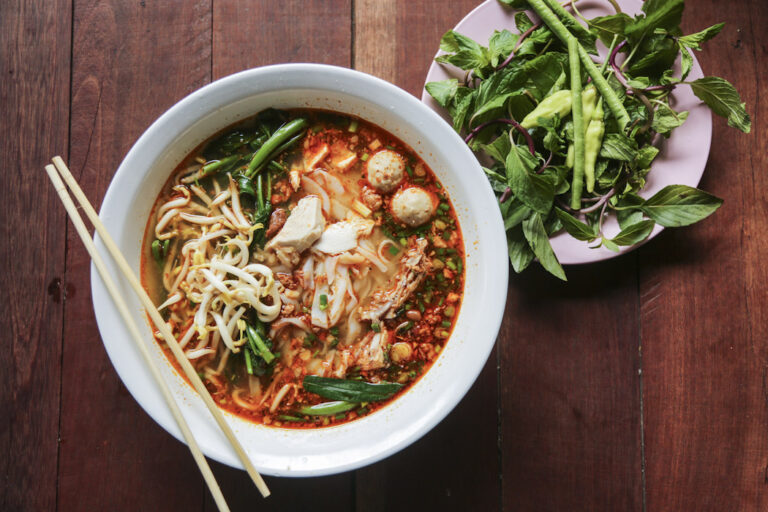Introduction: Laotian Ethnic Groups and Cuisine
Laotian cuisine is a unique blend of flavors, textures, and ingredients that reflects the country’s diverse ethnic groups and cultural traditions. The cuisine is characterized by its fresh herbs, spicy flavors, and sticky rice-based dishes. The country is home to over 100 ethnic groups, each with its own distinct cuisine and culinary practices.
The Diversity of Laotian Ethnic Groups
Laos is a multiethnic country with a population of over 7 million people, comprising over 100 ethnic groups. Each ethnic group has its own distinct language, culture, and cuisine, making Laos a melting pot of flavors and culinary traditions. The largest ethnic group in Laos is the Lao, who make up approximately 60% of the population. Other major ethnic groups include the Khmu, Hmong, and Tai Dam.
Laotian Cultural Traditions and Food
Laotian culture is deeply intertwined with its cuisine, with many traditional dishes being served during religious and cultural festivals. The country’s culinary traditions are influenced by its neighbors, including Thailand, Vietnam, and China. Laotian cuisine is characterized by its use of fresh herbs such as lemongrass, mint, and basil, as well as its spicy flavors, which are achieved through the use of chili paste and dry spices.
Influences from Laotian Ethnic Groups in Cuisine
Each ethnic group in Laos has its own unique culinary traditions, which have influenced the country’s cuisine as a whole. For example, the Hmong people are known for their fermented meat and vegetable dishes, while the Khmu are known for their spicy bamboo shoot salads. The Tai Dam people are known for their use of buffalo meat and sticky rice in their dishes.
Examples of Laotian Dishes with Ethnic Influences
Laotian cuisine is full of dishes that have been influenced by the country’s diverse ethnic groups. One example is larb, a spicy minced meat salad that is a staple in Lao cuisine. The dish is often made with pork or chicken and is flavored with fish sauce, lime juice, and chili paste. Another example is tam mak hoong, a Khmu dish that consists of shredded green papaya mixed with chili, tomato, and peanuts.
Conclusion: Exploring Laotian Cuisine and Culture
Laotian cuisine is a reflection of the country’s diverse ethnic groups and cultural traditions. From the spicy flavors of larb to the fresh herbs used in many dishes, Laotian cuisine is a unique blend of flavors and ingredients. Exploring the country’s culinary traditions is a great way to learn more about its culture and history.

